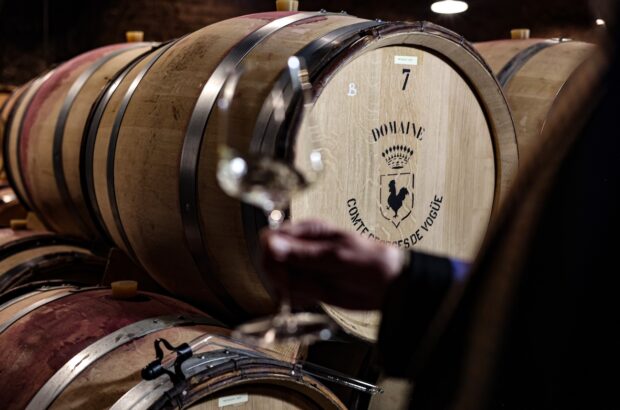Parker won't be there; nor will Robinson. Suckling, Meadows and Bettane will all be giving it a miss. The contingent from Decanter will be invisible; zero interest from The Wine Spectator. From the media perspective, it's the pariah among international wine fairs.
Even the manifold attractions of Amsterdam can’t change the fact that next month’s World Bulk Wine Exhibition will receive no coverage whatsoever in the wine press.
For all that, it’s likely to be a buzzy affair, and anyone in search of a quiet fortune in the wine world would be well advised to make a little space in their diary on the 21st and 22nd.
Historically speaking, bulk wine shipments had until recent years been on a long downward spiral. Baron Philippe de Rothschild’s decision to château-bottle Mouton from 1924 was the beginning of the end for the two hundred years of barrel shipments and merchant bottlings of fine wines. At that point, bottling at source began to become synonymous with quality.
It still is. From the consumer point of view, the corollary was plain enough: if your wine was bottled (or otherwise packaged) locally, it was second-rate and its only call on your attention was likely to be price.
Over the past half-decade, though, change has been in the wind. The proportion of bulk within the portfolios of most wine-exporting nations has grown. Spain has now pulled ahead of Italy as the world’s leading bulk-wine exporter, with about 880 million litres tanked off Spanish soil in 2010. Bulk wine, too, now accounts for almost half Australia’s exports (359 million litres in 2010), whereas the percentage was just 12% back in 2000. Bulk imports to the UK are rising annually, and are now almost a third of still-wine imports.
It would be easy to dismiss this growth in bulk as a tragic love-affair between over-producing wine-growers and increasingly impoverished consumers, filmed in the flickering and lurid light of an enduring global economic crisis. There’s unquestionably an element of distress to the business, and I don’t doubt that a percentage of those making fortunes from the growth in bulk are scavenging on carrion.
Personally, though, I hope bulk is here to stay; indeed I hope it plays an ever-greater role in the international wine-trade in future.
It may no longer be fashionable to say so, but carbon footprints matter. From an environmental perspective, glass is a catastrophically poor way to transport any liquid over a long distance. Glass, remember, is melted sand – and you need a lot of heat to melt sand. Every gram of virgin glass puts two-thirds of its own weight in CO2 into the atmosphere. Before it’s moved anywhere.
Glass, moreover, is heavy: the average bottle weight shipped to the UK is 500 g, and some pretentious heavy-glass bottles can weigh up to 900 g each. You can put 24,000 litres of wine into a shipping container in bulk compared to just 9,000 litres of wine in ordinary glass bottles, and less wine still in heavy ones. (Those heavy bottles, by the way, are usually made in Europe, thus they wallow across the equator twice when used for wines sourced from the Southern Hemisphere.)
I’m not, of course, asking Baroness Philippine de Rothschild to consider shipping Mouton in bulk once again: for fine wine, there is no alternative to glass at present. (Heavy glass bottles, by contrast, are mere vanity: there are other ways to give consumers quality cues).
Most wine, though, is not ‘fine’. It’s cheap. The average UK retail price for a bottle of wine is £4.37 at present, and under present tax regimes that means that the wine itself costs little more than 50p (depending on the retailer’s profit margin). Wines of this sort, all of them destined for rapid drinking, can be bulk-shipped without any loss of quality, as the bottlings of Scandinavian monopolies and German discounters often prove.
Indeed why stop there? Bag-in-box packages and paperboard bricks have a lower carbon footprint than any glass bottle, and recyclable plastic (PET) bottles are even more environmentally attractive. Short-term, they work well.
Consumers, I know, still look down on wine in plastic bottles – but those same folk once felt screwcaps were cheap and tacky, too. The role of the media and engaged consumers has been primordial in changing the screwcap mindset. For inexpensive, everyday wines, bulk shipment and non-glass packaging are the future. Good.
Written by Andrew Jefford







